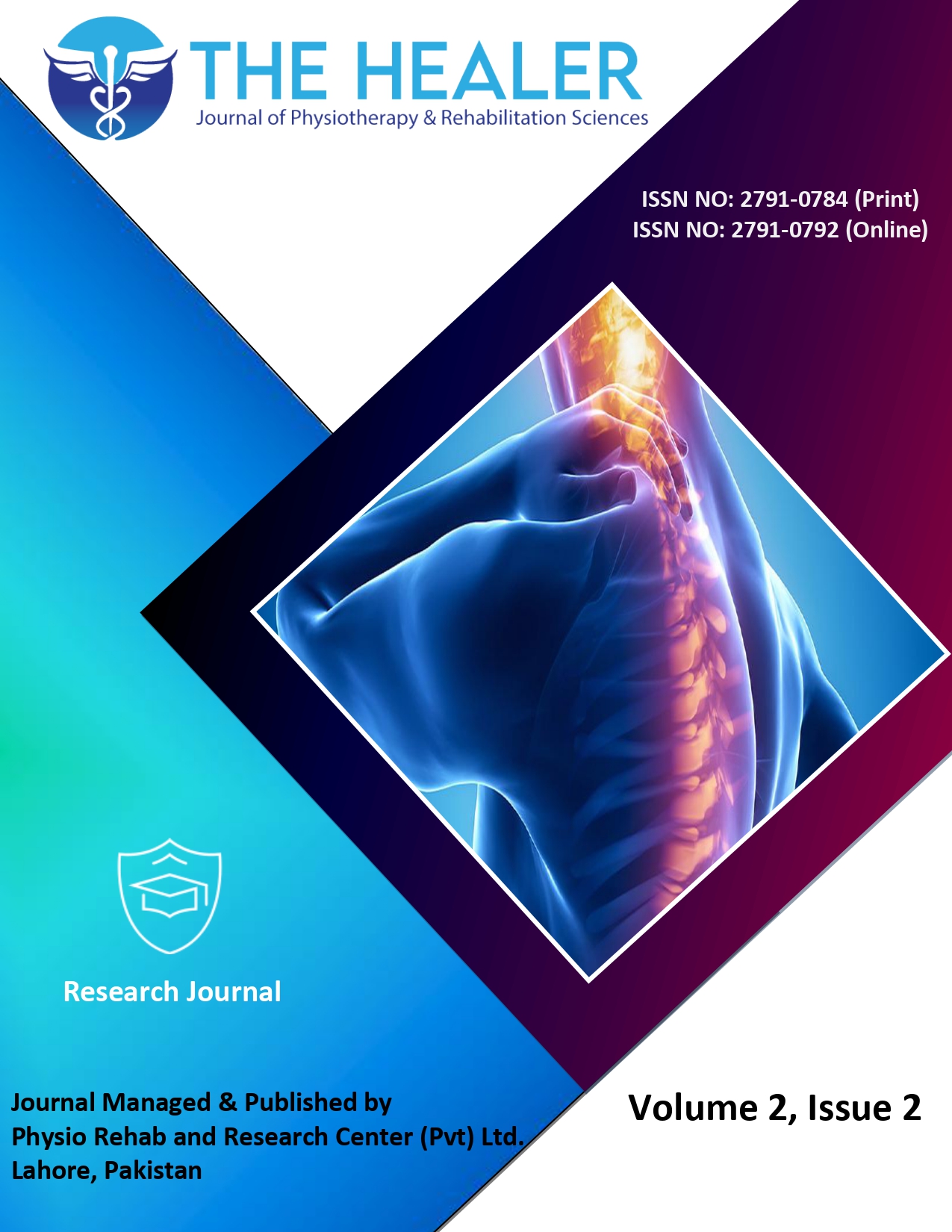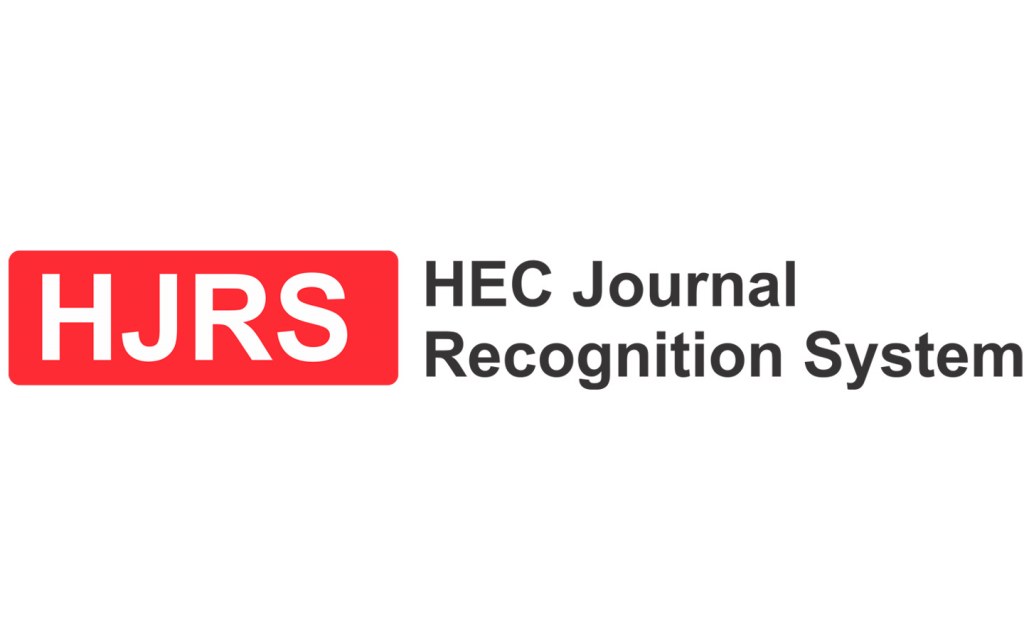Effects of Expanded Constraint-Induced Movement Therapy on Hand Function in Children with Cerebral Palsy: A Randomized Controlled Trial
Constraint-Induced Movement Therapy in Cerebral Palsy
DOI:
https://doi.org/10.55735/hjprs.v2i2.73Keywords:
cerebral palsy, expanded constraint-induced movement therapy, hemiplegiaAbstract
Background: Hemiplegic cerebral palsy children can attend schools regularly, but due to impairment of upper limb function, participation is restricted in leisure and educational tasks and it affects their social and functional activities. Constraint-induced movement therapy is specifically used for the upper extremity and can enhance cerebral palsy children’s hand function. Objective: To evaluate the effectiveness of expanded constraint-induced movement therapy on hand function in children with cerebral palsy. Methods: A single-blinded randomized controlled trial was conducted at the department of Physical Therapy, Children’s Hospital, Lahore, Pakistan from December 2021 to April 2022 using non-probability convenient sampling. Children with hemiplegic cerebral palsy aged between 5 and 12 years were randomly allocated into two groups (22 patients per group), the experimental group treated with expanded constraint-induced movement therapy and routine physical therapy and the conventional group treated with routine physical therapy only. The pediatric motor activity log scale and Wolf motor function test were the outcome measuring scales. The trial was approved by the ethical committee of the hospital and registered prospectively in the clinical trial registry of the US (ClinicalTrials.gov trial ID 57520). Results: As compared to the conventional group, the score of the pediatric motor activity log scale improved significantly (p-value ≤0.001) in the experimental group. Participants showed significant differences for both domains of the wolf motor function test in the experimental group as compared to other groups and they showed significant improvement in hand function (p≤0.001) within the groups. Conclusion: Expanded constraint-induced movement therapy along with routine physical therapy is found to be more effective in improving the function of the pelagic hand in children with hemiplegic cerebral palsy.
References
Van Naarden Braun K, Doernberg N, Schieve L, Christensen D, Goodman A, Yeargin-Allsopp M. Birth Prevalence of Cerebral Palsy: A Population-Based Study. Pediatrics 2016; 137(1): 1-9. https://doi.org/10.1542/peds.2015-2872
Chiu H-C, Ada L. Constraint-induced movement therapy improves upper limb activity and participation in hemiplegic cerebral palsy: a systematic review. Journal of physiotherapy 2016; 62(3): 130-7. https://doi.org/10.1016/j.jphys.2016.05.013
Gazya AAA, Serief AAA, Matar AG, Shendy W, Hamada HA. Impact of HandArm Bimanual Intensive Therapy Versus Shock Wave Therapy on Hand Function and Grip Strength in Children with Hemiplegic Cerebral Palsy.
Thakkar P. Effect of modified constraint induced movement therapy on hand function of hemiplegic cerebral palsy. International Journal of Current Research and Review 2014; 6(17): 29-36.
Abd El Wahab M, Hamed NE. Effect of hand-arm bimanual intensive therapy on fine-motor performance in children with hemiplegic cerebral palsy. Egyptian Journal of Medical Human Genetics 2015; 16(1): 55-9. https://doi.org/10.1016/j.ejmhg.2014.07.005
Hoare B, Greaves S. Unimanual versus bimanual therapy in children with unilateral cerebral palsy: Same, same, but different. Journal of pediatric rehabilitation medicine 2017; 10(1): 47-59. https://doi.org/10.3233/prm-170410
Hoare B, Imms C, Carey L, Wasiak J. Constraint-induced movement therapy in the treatment of the upper limb in children with hemiplegic cerebral palsy: a Cochrane systematic review. Clin Rehabil 2007; 21(8): 675-85. https://doi.org/10.1177/0269215507080783
Simon-Martinez C, Mailleux L, Hoskens J, et al. Randomized controlled trial combining constraint-induced movement therapy and action-observation training in unilateral cerebral palsy: clinical effects and influencing factors of treatment response. Therapeutic advances in neurological disorders 2020; 13: 1756286419898065. https://doi.org/10.1177/1756286419898065
Eliasson AC, Nordstrand L, Ek L, et al. The effectiveness of Baby-CIMT in infants younger than 12 months with clinical signs of unilateral-cerebral palsy; an explorative study with randomized design. Res Dev Disabil 2018; 72: 191-201. https://doi.org/10.1016/j.ridd.2017.11.006
Deppe W, Thuemmler K, Fleischer J, Berger C, Meyer S, Wiedemann B. Modified constraint-induced movement therapy versus intensive bimanual training for children with hemiplegia - a randomized controlled trial. Clin Rehabil 2013; 27(10): 909-20. https://doi.org/10.1177/0269215513483764
Taub E, Ramey SL, DeLuca S, Echols K. Efficacy of constraint-induced movement therapy for children with cerebral palsy with asymmetric motor impairment. Pediatrics 2004; 113(2): 305-12. https://doi.org/10.1542/peds.113.2.305
Psychouli P, Kennedy CR. Modified Constraint-Induced Movement Therapy as a Home-Based Intervention for Children With Cerebral Palsy. Pediatr Phys Ther 2016; 28(2): 154-60. https://doi.org/10.1097/pep.0000000000000227
Uswatte G, Taub E, Griffin A, Vogtle L, Rowe J, Barman J. The pediatric motor activity log-revised: assessing real-world arm use in children with cerebral palsy. Rehabilitation Psychology 2012; 57(2): 149. https://doi.org/10.1037/a0028516
Uswatte G, Taub E, Griffin A, Vogtle L, Rowe J, Barman J. The pediatric motor activity log-revised: assessing real-world arm use in children with cerebral palsy. Rehabil Psychol 2012; 57(2): 149-58. https://doi.org/10.1037/a0028516
Chen H-c, Chen C-l, Kang L-j, Wu C-y, Chen F-c, Hong W-h. Improvement of upper extremity motor control and function after home-based constraint induced therapy in children with unilateral cerebral palsy: immediate and long-term effects. Archives of physical medicine and rehabilitation 2014; 95(8): 1423-32. https://doi.org/10.1016/j.apmr.2014.03.025
Hwang J, Lee JA, You JSH. Multiple relationships between Tardieu, Kinematic data, and Wolf Motor Function Test with children with cerebral palsy. NeuroRehabilitation 2019; 44(2): 191-7. https://doi.org/10.3233/nre-182610
Uswatte G, Taub E, Bowman MH, et al. Rehabilitation of stroke patients with plegic hands: Randomized controlled trial of expanded constraint-induced movement therapy. Restorative neurology and neuroscience 2018; 36(2): 225-44. https://doi.org/10.3233/rnn-170792
Acıkbas E, Tarakcı D, Budak M. Comparison of the effects of Kinesio tape and neuromuscular electrical stimulation on hand extensors in children with cerebral palsy. International Journal of Therapy And Rehabilitation 2020: 1-12. https://doi.org/10.12968/ijtr.2019.0053
Jackman M, Novak I, Lannin N, Galea C. Immediate effect of a functional wrist orthosis for children with cerebral palsy or brain injury: A randomized controlled trial. Journal of Hand Therapy 2019; 32(1): 10-6. https://doi.org/10.1016/j.jht.2017.09.006
Jamali AR, Amini M. The effects of constraint-induced movement therapy on functions of cerebral palsy children. Iranian journal of child neurology 2018; 12(4): 16.
Amini M. The effects of Constraint Induced Movement Therapy on functions of cerebral palsy children: a systematic review of studies in Iran. Iranian Journal of Child Neurology 2018; 12(4): 16-27.
Christmas PM, Sackley C, Feltham MG, Cummins CJCr. A randomized controlled trial to compare two methods of constraint-induced movement therapy to improve functional ability in the affected upper limb in pre-school children with hemiplegic cerebral palsy: CATCH TRIAL. 2018; 32(7): 909-18. https://doi.org/10.1177/0269215518763512

Downloads
Published
How to Cite
License
Copyright (c) 2022 The Healer Journal of Physiotherapy and Rehabilitation Sciences

This work is licensed under a Creative Commons Attribution 4.0 International License.
CC BY












